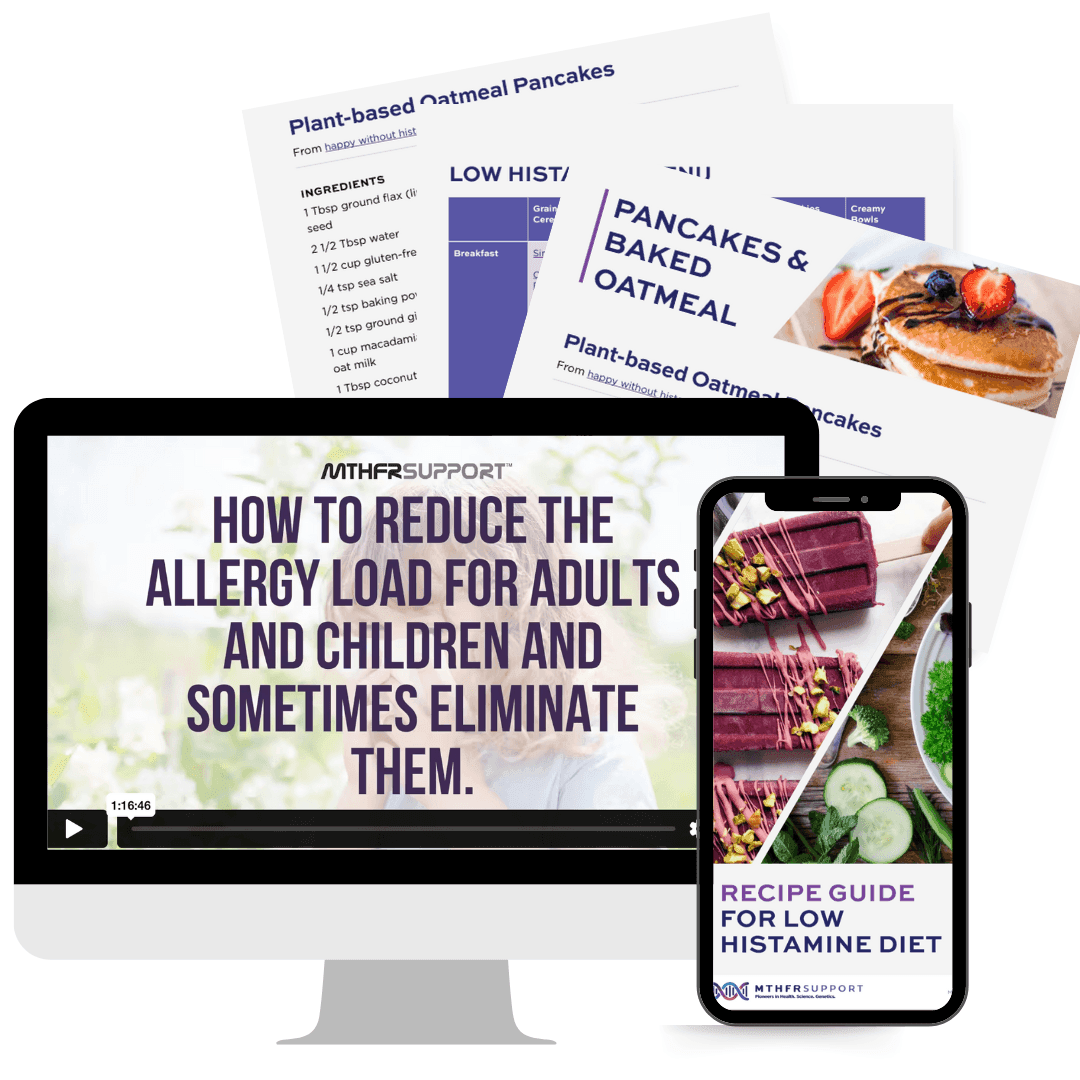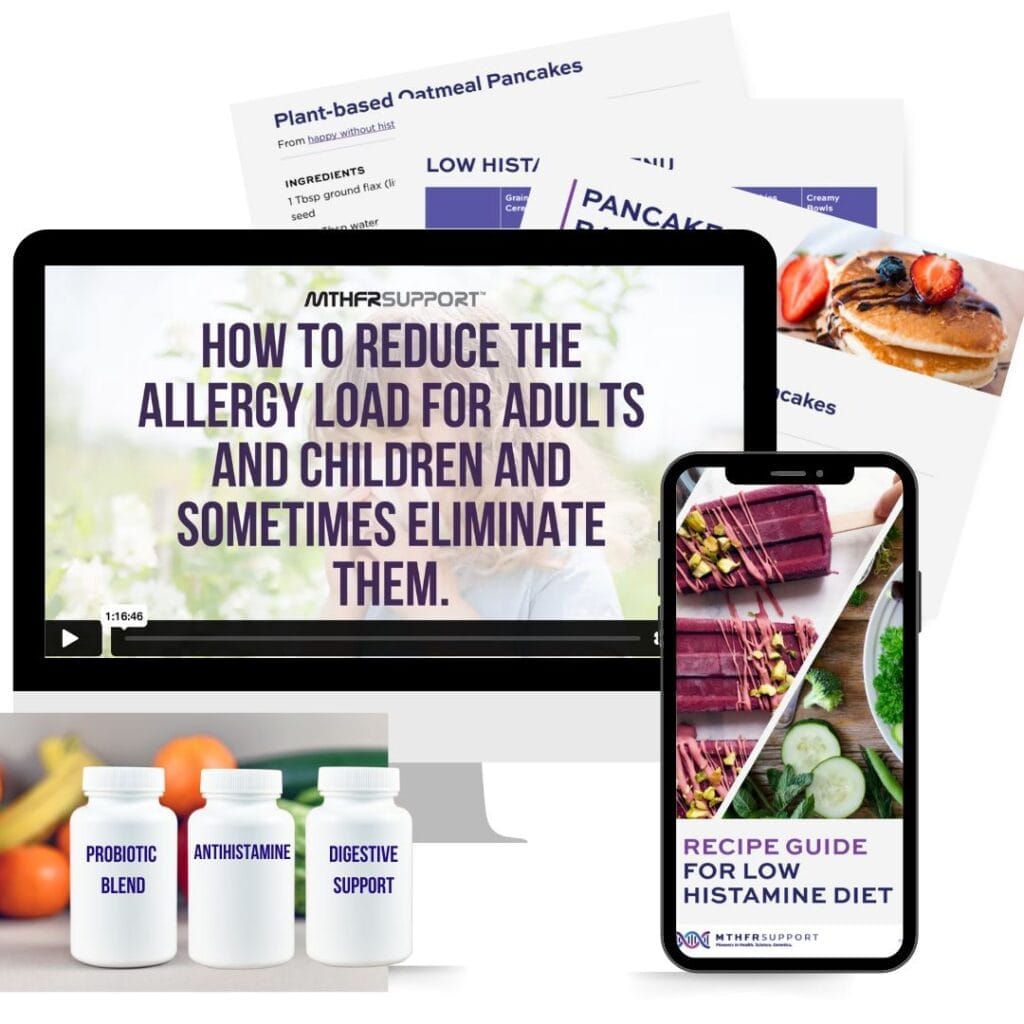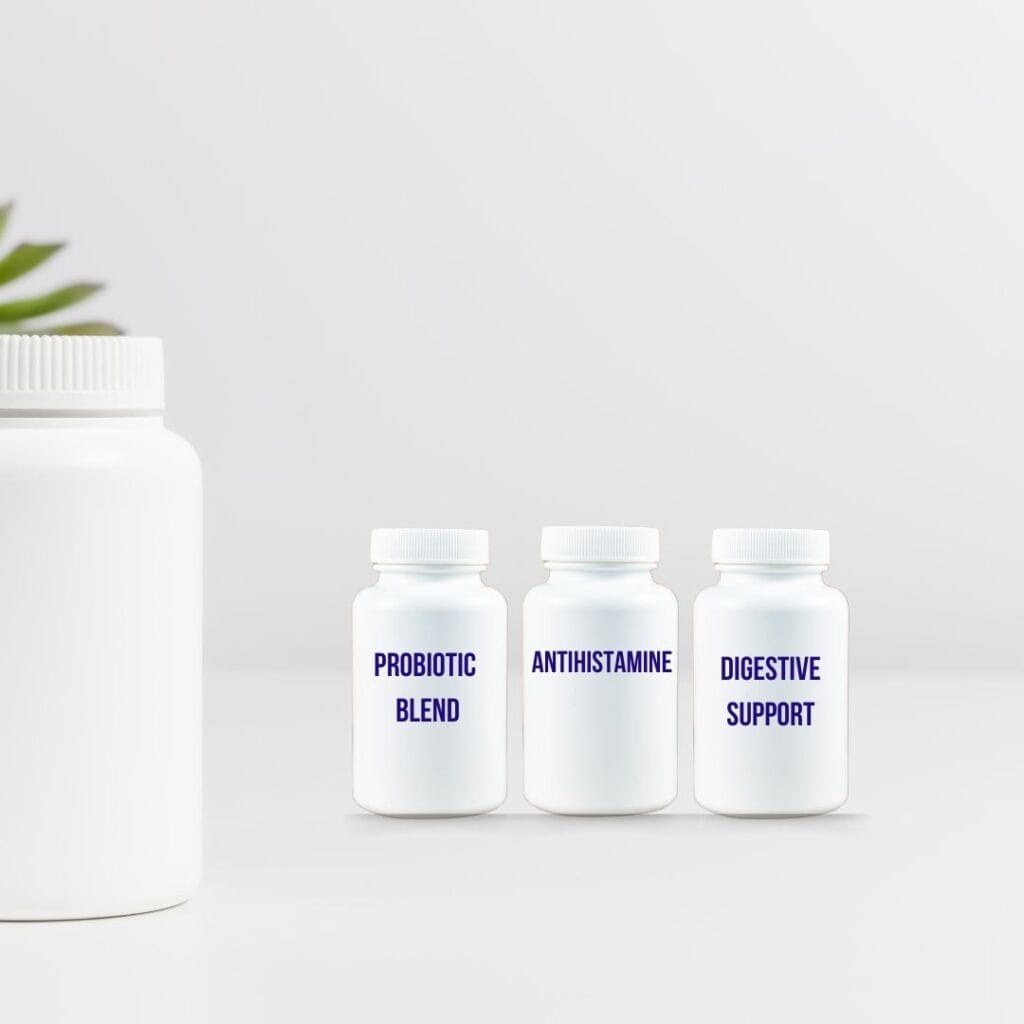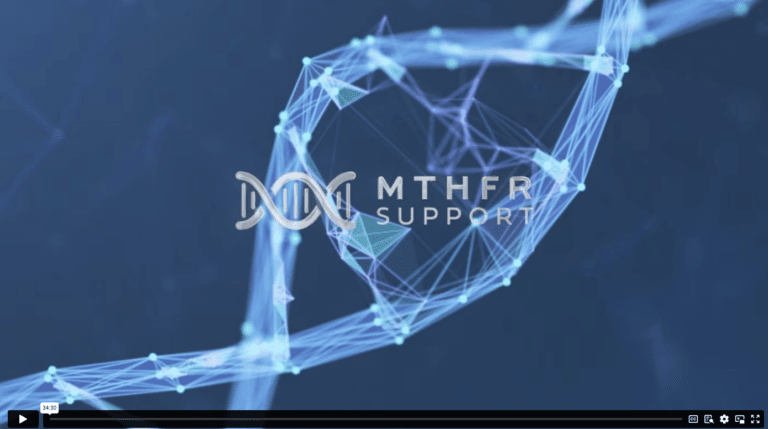Are your genes making you more susceptible to headaches, migraines and allergies?
Find out how you can address these conditions and possibly eliminate them for good.
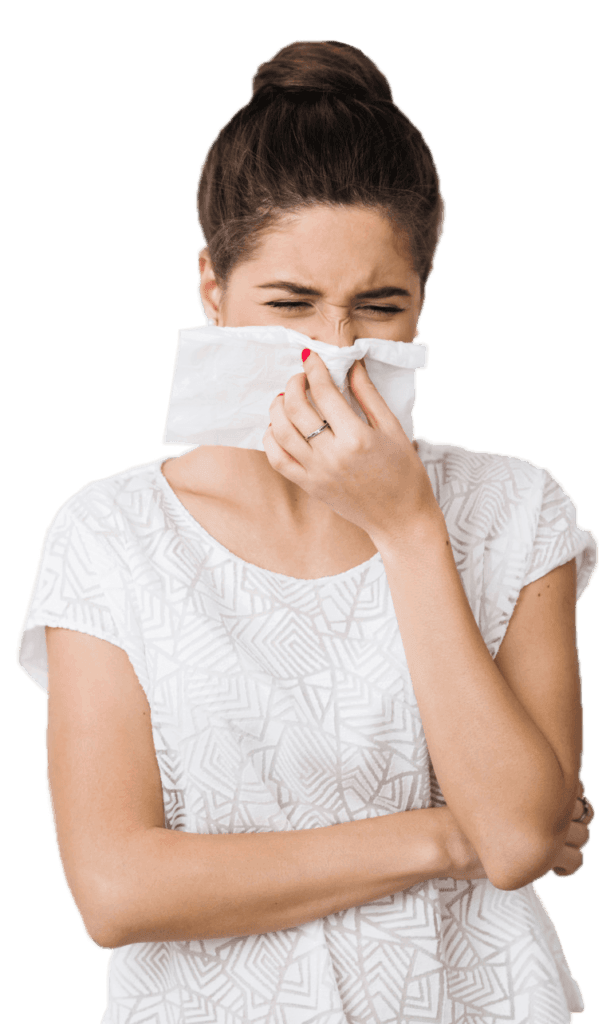

Do you know that allergies, headaches and migraines affect more than 34% of the population at some point in their lives? Australia has one of the highest rates of allergies in the world. Why?
We believe that allergies, headaches and migraines are primarily caused by a histamine excess. Histamine is a signalling molecule that is triggered by some sort of inflammatory response – it may be triggered by mast cells due to exposure to mould, viruses similar to COVID-19, bacterial toxins such as (Lipopolysaccharides or LPS) due to gut bacteria and much more.
For some of you, your genes make these reactions worse. For example, you may not be able to break histamine down effectively, or you may not produce enough diamine oxidase enzyme in the gut to help you break food-based histamine down, which leads to reactions and symptoms when this histamine is triggered.
Signs and symptoms you may have a histamine problem:
- Sneezing
- Headaches especially after eating certain foods or alcohol
- PMS and period pain
- Anxiety
- Migraines triggered by your menstrual cycle
- Eczema
- Fatigue
- Hives
- Runny watery eyes
- Itchy eyes
- Runny nose when exposed to cold air
- Stomach cramps after eating certain foods
- Explosive diarrhoea after eating certain foods
- Flushed red face when you drink alcohol
Download our FREE histamine symptom checklist to learn if you have a histamine issue.
How do your genes affect allergies and histamine
THE ROLE OF YOUR GENES IN HEADACHES, MIGRAINES AND ALLERGIES
Histamine intolerance (HIT)
When histamine is formed, it is broken down by specific enzymes. In the central nervous system, it is metabolised by histamine N-methyltransferase (HNMT), while in the digestive tract, it is broken down by diamine oxidase (DAO).
HIT is a relatively common condition. When it comes to histamine intolerance we always investigate mutations in the DAO gene which affects the gut and the HNMT gene because it has more of a systemic effect (this means it affects your whole body including lungs, skin, and head).
DAO
The enzyme diamine oxidase (DAO) is the major enzyme involved in histamine metabolism and is responsible for ensuring a steady histamine level required for the balance of numerous chemical reactions taking place in the body.
DAO is the key enzyme responsible for the degradation of extracellular (free) histamine, regardless of whether the histamine originates from allergy-induced processes in the body or is consumed with food.
The activity of DAO determines the rate of histamine breakdown.
Single nucleotide polymorphisms (SNPs) in the DAO gene
Just because you have a polymorphism doesn’t mean you will necessarily have any issues, but it can mean you are susceptible so that when something environmental sets you off, you have a harder time clearing histamine and that’s when the allergies, headaches and gut issues can start. COVID-19 was a great example because the virus triggered inflammation which set histamine off for a lot of people .5 So for you, given that histamine is present in our daily diet, we need to be careful what we’re consuming every day.
DAO deficiency can be caused by genetic factors (primary deficiency) when certain polymorphisms in the DAO gene lead to a significantly reduced DAO enzyme activity.4 Individuals with a DAO gene mutation may tend to have high histamine.
Do you want to check your genes to see if you have a histamine problem? Purchase our complete GENE test to find out.
If the activity of DAO is inhibited, histamine will accumulate in the blood.
The DAO enzyme is dependent on vitamins B6, B12, iron, copper and vitamin C, so it would be helpful to increase their intake. Copper and Vitamin C are crucial components of the DAO enzyme and Vitamin B6 is a key cofactor that enables DAO to degrade histamine. Copper deficiency is another possible cause for low DAO activity, as copper is a central atom of the DAO and is thus essential for its function. Together with the copper levels, zinc levels should be checked at the same time, as zinc prevents intestinal copper absorption.
Medications/Drugs
The DAO enzyme can also be down-regulated by certain medications:
- Non-steroidal anti-inflammatory drugs (ibuprofen, aspirin)
- Antidepressants (Cymbalta, Effexor, Prozac, Zoloft)
- Immune modulators (Humira, Enbrel, Plaquenil)
- Antiarrhythmics (propanolol, metaprolol, Cardizem, Norvasc)
- Antihistamines (Allegra, Zyrtec, Benadryl)
- Histamine (H2) blockers (Tagamet, Pepcid, Zantac)
HNMT
Histamine N-methyltransferase (HNMT) is the other gene that plays an important role in regulating histamine. HNMT breaks down the histamine intracellularly and it inactivates histamine by transferring a methyl group from S-adenosyl-L-methionine to histamine (aka methylation).
HNMT is expressed in many human tissues, with the highest levels found in the liver, responsible for degrading histamines generated as a result of the functions of the body and in particular mast cells. It’s expressed in the kidneys and also in the bronchi and trachea.
SNPs in the HNMT gene
SNP’s in the HNMT gene can cause histamine to build up. A polymorphism that slows down HNMT prevents the breakdown of histamine, just like a SNP in the DAO enzyme will cause histamine to accumulate.
If you have either SNP (DAO or HNMT), your histamine will build up too high.
Medications/Drugs
Medications that block Histamine N-Methyl Transferase (HNMT):
- Chloroquine (Amodiaquin, an antimalarial)
- Hydroxychloroquine
- Pyrimethamine
- Promethazine
- Chloroguanil
- Diphenhydramine (H1 antihistamine, Benedryl, but can slightly increase DAO activity also)
- Folate antagonists such as metoprine (HNMT requires folate for activity)
- Tacrine (anticholinesterase, early Alzheimer's drug)
Controlling Histamine
Some individuals with high histamine are considered to be “undermethylators”. This suggests they don’t have enough methyl groups needed to break down histamine. This might be because of a MTHFR polymorphism or a block in enzymes that help us make SAMe (which is our universal methyl donor)
The four key nutrients that support under-active methylation activity include:
- Vitamin B-6
- SAMe and the amino acid L-methionine
- Zinc
- Betaine hydrochloride
Additionally, there are natural enzyme formulations used to increase histamine breakdown in the gut. These are all commercially available today. Additional herbs and nutrients have been reported as effective for modulating histamine release during allergy flare-ups.
These include:
- Quercetin
- Skullcap
- Eyebright
- Platycodon
- Silk Tree
- Silk White Mulberry
- Bromelain
- Vitamin C
- Calcium
- MSM
- Stinging nettles
Purchase your Histamine Support Bundle
Nutrition
The first thing to do is to try a low histamine diet and see if symptoms improve.
Access our histamine diet resource here which includes 80+ low histamine recipes and sample meal plans.
Rather than only focusing mainly on what you should not be eating, it is much better to turn your attention and effort to what you can eat to support your healing, health and wellness.
When you have a SNP in your histamine genes (DAO or HNMT), the best prevention for accumulation of histamine is regulation of the diet.




First of all, you need to avoid nutrients that are high in histamine (alcohol, matured cheeses, vinegar, fermented foods, etc.), food that can cause the release of histamine (bananas, chocolate, nuts, shellfish, strawberries) or foods that cause blocking of DAO (alcohol, energy drinks, black tea, green tea) complicating the condition even more.
Some foods naturally have more histamine, while others accumulate histamines while they age. This means a low histamine diet must be focused on getting foods at their peak level of freshness.
The food diary
The next really important thing when you’re suffering from HIT is if you can find out what is causing your symptoms. And, there is no better way for that than by making use of a FOOD DIARY!
Writing a food diary should assist you, and your practitioner with the following:
- Finding the cause of your symptoms
- Tracking your reactions
- Making the necessary changes to your diet
The key is to insert as much information as you can. The more you write in, the higher the chances that you can get to the bottom of the issue.
Here are some examples for what you should include in your diary:
- Date
- Time when you had the food and/or drink
- What food you ate,
- Time of reaction- when it started and the length
- The symptoms and description
- Severity of the symptoms on a scale from 1-10
- Medication or supplements taken – brand, strength, amount and time taken.
- Important notes for the past week
So, grab your notebook and start your food diary.
If you would like personal help to determine what is right for you, follow our
GENETIC DNA HEALTH SOLUTION ROAD MAP
Histamine Relief Packages (to reduce headaches, migraines, allergies, PMS pain)
Eliminating histamine and taking the right supplements is the most important first step until you can understand which genes or environmental triggers are affecting you.
Histamine Relief Package 1
Understanding histamine
Histamine Recipe Book + Webinar-How to reduce the allergy load for adults and children
$170 AUD
*Note: Free for PKC members. Login to the portal to view this content
Histamine Relief Package 2
Histamine Support Supplement Bundle
Histamine Recipe Book + Webinar-How to reduce the allergy load for adults and children + Histamine Relief Supplements
$329 AUD
*Note: Patient Knowledge Members get 10% off
Histamine Relief Package 3
The Complete Histamine Genetics Package
Histamine Recipe Book + Webinar-How to reduce the allergy load for adults and children + Initial Consultation + Smart DNA Test
$865 AUD
*Note: Patient Knowledge Members get 10% off
Histamine Relief Package 1
Understanding histamine
Histamine Recipe Book + Webinar-How to reduce the allergy load for adults and children
$170 AUD
*Note: Free for PKC members. Login to the portal to view this content
Histamine Relief Package 2
Histamine Support Supplement Bundle
Histamine Recipe Book + Webinar-How to reduce the allergy load for adults and children + Histamine Relief Supplements
$329 AUD
*Note: Patient Knowledge Members get 10% off
Histamine Relief Package 3
Histamine Support Supplement Refill
Histamine Relief Supplements
$159 AUD
*Note: Patient Knowledge Members get 10% off
Histamine Relief Package 4
The Complete Histamine Genetics Package
Histamine Recipe Book + Webinar-How to reduce the allergy load for adults and children + Initial Consultation + Smart DNA Test
$865 AUD
*Note: Patient Knowledge Members get 10% off
FREE Resources for Headaches, Migraines and Allergies
Download the histamine questionnaire to see if you have a histamine problem.
Do you have a mould problem?
Take our mould illness questionnaire to see if you may have symptoms of mould mycotoxins and/or CIRS Chronic Inflammatory Response Syndrome which will increase histamine. Find out with this simple questionnaire here.
Patient Knowledge Centre
Love to learn? Looking for solutions and treatment plans? Our Patient Knowledge Centre is an amazing resource centre with 100’s of hours of webinars and treatment protocols to empower you to keep you and your family healthy. And the best bit? Every month you get the chance to get your questions answered LIVE by Carolyn Ledowsky.




